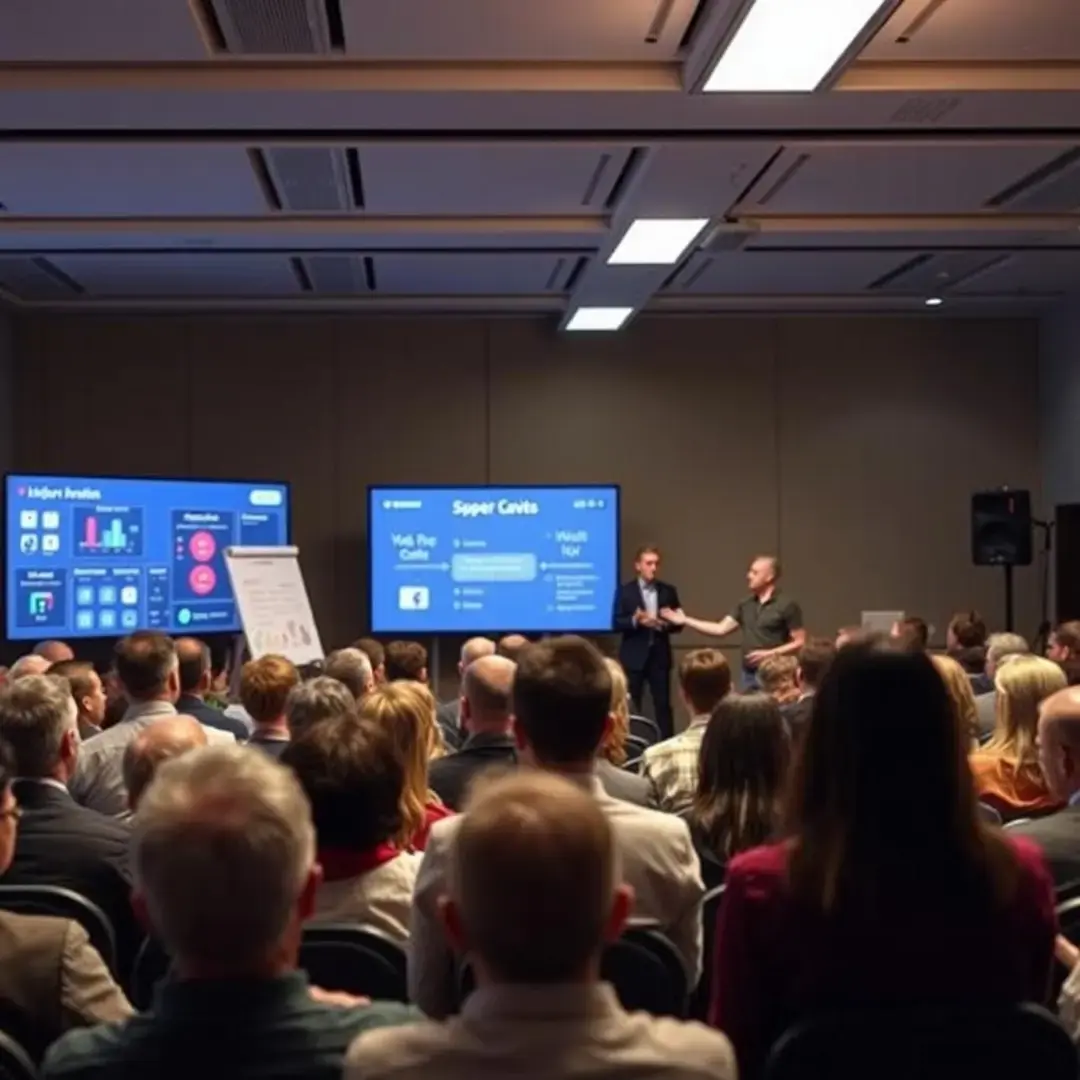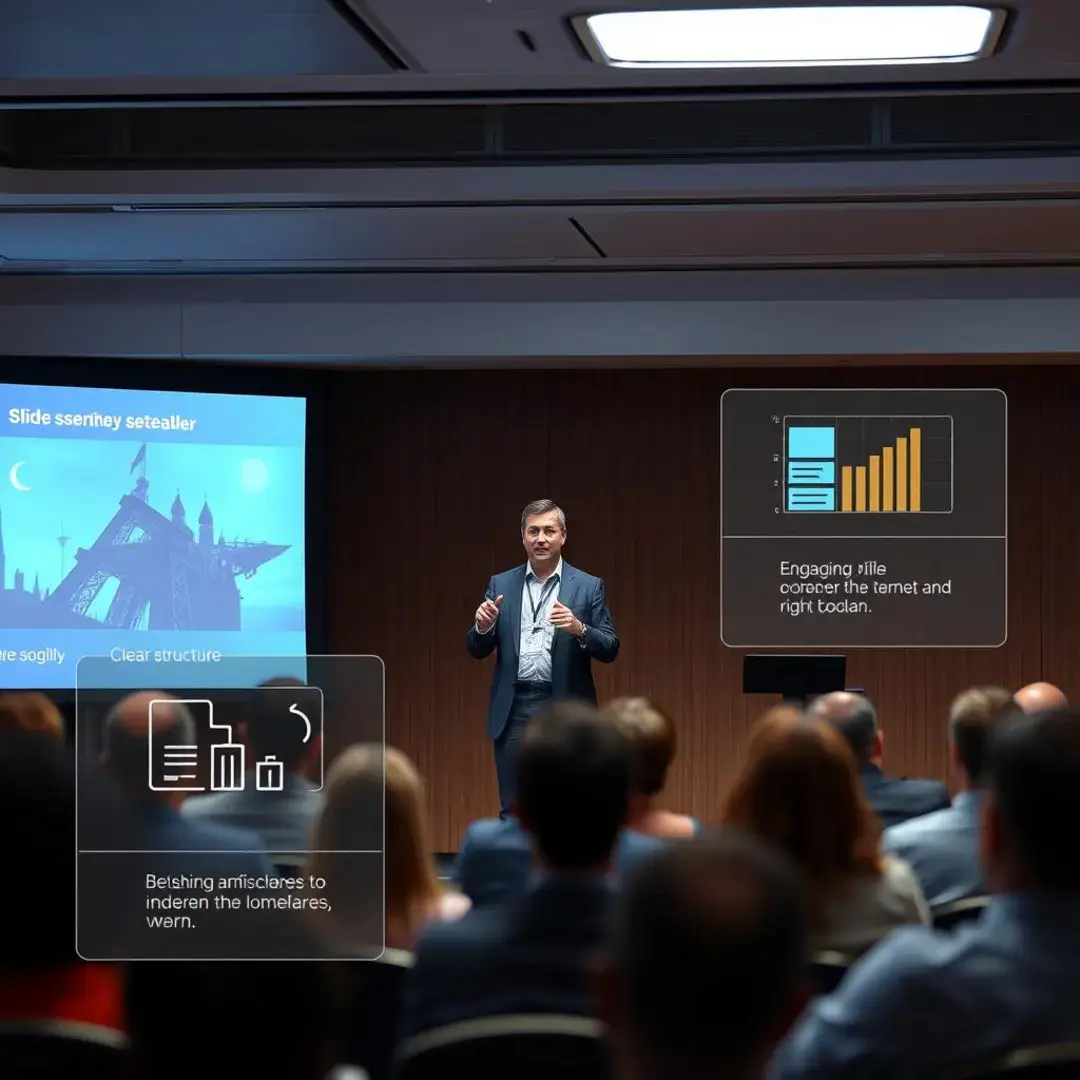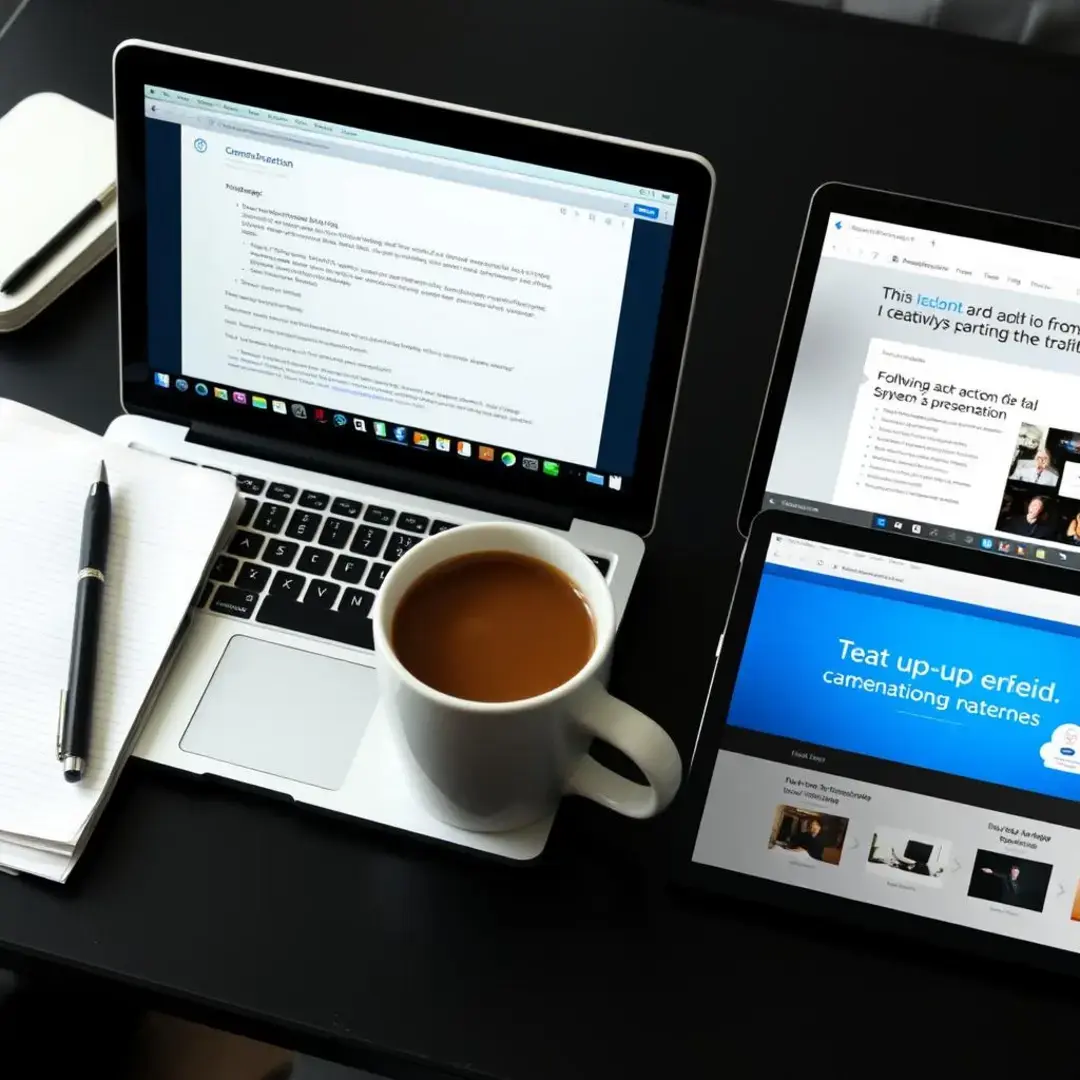How to deliver a Persuasive Pitch Presentation in 6 Steps?
1. Understanding your audience and tailoring your message

To create an effective pitch presentation, it’s crucial to understand your audience. This means not only knowing who they are, but also grasping their needs, pain points, and expectations. By researching your audience thoroughly, you can craft a message that resonates deeply with them.
1.1. Researching your audience’s needs and pain points
Start by identifying key decision-makers within your audience. This may include investors, executives, or potential clients. Understanding their priorities can help you tailor your message to highlight what matters most to them. Additionally, analyze their level of knowledge and expertise to adjust your language and examples accordingly.
- Make a list of attendees and their roles.
- Research their backgrounds and professional histories.
- Determine what challenges they are facing that your pitch can solve.
- Consider the technical knowledge of your audience.
- Use language that is appropriate to their understanding.
- Avoid jargon if the audience is not familiar with terms.
1.2. Crafting a compelling narrative that resonates with your audience
A great pitch involves storytelling. It’s essential to weave a narrative that captures the heart and mind of your audience. Start by defining a clear and concise value proposition that explains why your idea or product is valuable to them. A well-crafted story can make complex ideas more relatable.
Your value proposition should succinctly convey the benefits of your offering. Focus on the problem it solves, how it solves it, and why your solution stands apart. Keep it straightforward and memorable.
- Use real-life examples to illustrate your points.
- Engage emotions by sharing personal anecdotes.
- Draw your audience into a relatable situation to foster connection.
2. Structuring your pitch for maximum impact

The structure of your pitch plays a significant role in how your message is received. Begin with a strong opening that grabs attention and ends with a compelling conclusion that encourages action. The flow of information should lead the audience naturally from one point to the next.
2.1. The importance of a strong opening and closing
Opening strongly can capture the audience’s interest immediately, which is essential in a competitive environment. A strong conclusion reinforces your key points and provides a clear call to action, making it easier for your audience to remember what you want them to do after the presentation.
- Begin with a provocative question or startling statistic.
- Share an interesting story or personal experience.
- Use a relevant quote that resonates with your message.
Your closing remarks should summarize the key takeaways succinctly, followed by a direct request or challenge to your audience. Whether it’s scheduling a follow-up meeting, investing in the idea, or simply providing feedback, ensure your call to action is unmistakable.
2.2. Organizing your key points logically and persuasively
The core of your presentation should follow a logical progression. Using a problem-solution-benefit framework can help frame your argument in a way that is both meaningful and intelligible. Clearly presenting evidence and data will bolster your credibility and enhance your argument.
- Outline clearly defined problems that are relevant to the audience.
- Introduce your solution logically.
- Highlight the specific benefits that your solution provides.
Utilizing data-driven insights not only enhances your credibility but also provides your audience with the assurance that your pitch is grounded in reality. Use charts, graphs, and studies that can lend support to your arguments, ensuring you highlight their relevance throughout your pitch.
3. Designing visually appealing and effective slides

A well-designed presentation can significantly enhance the audience’s engagement. Visual aids should complement your message, not overwhelm it. This means keeping slides simple and focused, with visuals that enhance understanding.
3.1. Best practices for slide design and layout
Effective slides should convey your message at a glance. Use visuals such as charts and images, along with minimal text, to support your speech. Avoid clutter and ensure that each slide has a clear purpose and delivers a single message to the audience.
- Choose high-quality images that reinforce your message.
- Utilize infographics to summarize complex data.
- Incorporate videos where applicable for added engagement.
Keep slides simple to avoid overwhelming the audience. Stick to one key idea per slide, using bullet points to highlight critical information. Remember, the slides should assist your delivery, not serve as the sole focus.
3.2. Choosing the right fonts, colors, and images
The aesthetics of your presentation can affect how your message is perceived. Using a consistent font style and color scheme can help establish brand identity and maintain professionalism throughout your presentation. Prioritize readability by avoiding overly decorative fonts that may distract instead of clarify.
- Use your company’s colors consistently across slides.
- Select fonts that align with your brand’s personality.
- Incorporate your logos and visuals to reinforce identity.
Always consider the audience’s ability to read and comprehend your slides. Use contrasting colors for text and background for visibility. Ensure all visual elements are accessible to everyone in the room, including those with visual impairments.
4. Mastering your delivery and stage presence

The way you deliver your pitch can be as important as the content itself. Your stage presence and ability to communicate with energy and enthusiasm can capture and maintain the interest of your audience. Practicing your delivery is key to achieving a confident appearance.
4.1. Practicing your pitch and refining your delivery
Rehearsing your presentation allows you to refine your message and discover areas for improvement. Consider recording yourself or practicing in front of peers to receive constructive feedback. Varying your vocal tone and pace can help keep your audience’s attention throughout your pitch.
- Practice altering your tone to emphasize key points.
- Vary your pacing to create suspense or highlight urgency.
- Incorporate pauses to give your audience a moment to digest key messages.
Your body language should support your spoken words. Use gestures to emphasize points but avoid excessive movements that could distract. A strong posture and purposeful movement across the stage can convey confidence and engagement.
4.2. Managing nerves and projecting confidence
It’s natural to feel nervous before a presentation. However, managing these feelings can make a significant difference in your performance. Techniques such as deep breathing and positive visualization can help calm your nerves.
- Practice deep breathing exercises before stepping on stage.
- Visualize a successful presentation beforehand.
- Engage in positive self-talk to replace anxious thoughts.
Making eye contact with your audience can create a stronger connection and command attention. By engaging with your audience, you’ll make them feel included and valued. This engagement can be achieved through direct questions or inviting audience insights.
5. Handling questions and objections with confidence

Questions from the audience can often create pressure, but they also present opportunities to clarify, persuade, and strengthen your presentation. Anticipating potential inquiries can prepare you to respond thoughtfully and confidently. Handling objections skillfully can even help solidify your argument.
5.1. Anticipating potential questions and preparing answers
Consider the likely concerns or skepticism your audience may have regarding your presentation. Preparing answers to these questions in advance can alleviate pressure during the Q&A segment. Having a strategy for addressing difficult queries is essential for retaining credibility.
- Practice common objections and rehearse your responses.
- Stay calm and composed, even if faced with challenging questions.
- Encourage a dialogue by inviting feedback and discussions.
By viewing objections as opportunities for discussion, you can turn a potentially negative interaction into a platform to fortify your points. Address concerns empathetically and use them to further explain the value of your solution.
5.2. Maintaining composure and professionalism under pressure
It’s crucial to exhibit professionalism, even in the face of difficult or unexpected questions. This composure reflects your expertise and confidence in your material. Take a moment to think before responding, which allows you to construct well-thought-out answers.
- Demonstrate active listening by nodding and paraphrasing questions.
- Acknowledge the audience’s concerns to validate their thoughts.
- Ensure your responses are relevant and address their inquiries directly.
Always respond to questions with respect and thoughtfulness, facilitating a positive conversational flow. This approach promotes a constructive dialogue and encourages a supportive atmosphere among all participants.
6. Following up strategically after your presentation

After your presentation, a well-timed follow-up can solidify the connections you’ve made. Sending personalized thank-you notes and follow-up emails not only shows appreciation but reinforces your key messages. This step is vital for transitioning a successful pitch into actionable next steps.
6.1. Sending personalized thank-you notes and follow-up emails
In your follow-up communication, ensure it is personalized to your audience’s interests and engagement during the pitch. Reinforcing the key takeaways from your presentation serves as a reminder of the value you offer. Including additional resources or information can also highlight your commitment to their needs.
- Summarize the main points in a clear and concise manner.
- Highlight any key benefits specific to the recipient.
- Reiterate your call to action to encourage next steps.
Offering supplementary materials demonstrates your dedication and expertise. This could range from articles, case studies, to even slides from your presentation tailored for reference. Be sure to include links or attachments for easy access.
6.2. Building relationships and nurturing leads
Building on your initial connection can open doors for future opportunities. Staying in touch with potential clients or investors establishes trust and keeps you at the forefront of their minds. It’s essential to foster this relationship proactively.
- Set reminders to follow up periodically.
- Engage with them through social media or industry events.
- Share relevant insights that may interest them.
Continuing the conversation encourages a deeper connection and unfolds additional opportunities. Engage in discussions about their interests or industry updates, creating a relationship that feels organic. A good rapport can often lead to fruitful partnerships and collaborations.












